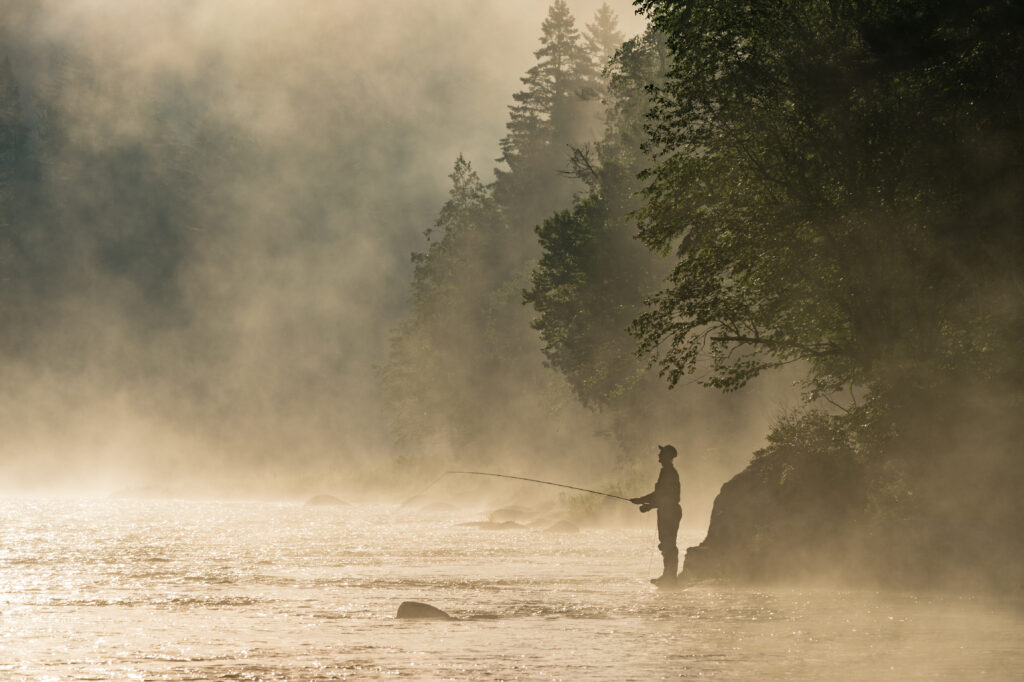Fisheries Management
Sustainable Harvest
Over exploitation of salmon stocks was once another major factor in population decline – with the salmon’s life cycle adding a further layer of complexity. Given a migration that takes salmon from their rivers of origin to feeding grounds in the sub-Arctic and into the fisheries zones of other countries, reducing overexploitation was a matter that required international co-operation.
Despite some measures relating to distant-water fisheries (when vessels fish well beyond their national waters) being agreed in the 1970s, salmon catches in or near to rivers of origin continued to decline. This prompted calls for an international convention devoted to Atlantic salmon – a forum for countries to co-operate on salmon conservation, restoration, rational management and enhancement. The subsequent formation of NASCO saw the immediate banning of fishing for salmon in most parts of the North Atlantic beyond 12 nautical miles from the coast – a move that created a large protected zone, free of targeted fisheries.

Resolutions, Agreements and Guidelines
- Minimum Standard for Catch Statistics (CNL(93)51)
- Resolution by the Parties to the Convention for the Conservation of Salmon in the North Atlantic Ocean Concerning Scientific Research Fishing (CNL(96)60)
- Decision Structure For Management of North Atlantic Salmon Fisheries (2002)
- Guidelines on Catch and Release (also available in French).
- Guidelines for the Management of Salmon Fisheries (2009) (also available in French).
NASCO Regulatory Measures
The NASCO Convention states that one of the functions of the West Greenland Commission and the North East Atlantic Commission is ‘to propose regulatory measures for fishing in the area of fisheries jurisdiction of a member of salmon originating in the rivers of other Parties’. This has meant that regulatory measures agreed by NASCO have greatly reduced the catch of salmon in the distant-water fisheries at West Greenland and around the Faroe Islands. There has been no commercial harvest by the Faroe Islands since the early 1990s and the Greenland fishery is currently an internal-use fishery.
Fishing for Salmon in International Waters by non-NASCO Parties
NASCO has taken measures to eliminate fishing for salmon in international waters by non-NASCO Parties. There have been no sightings of vessels fishing for salmon in international waters since the early 1990s.
- Resolution on Fishing for Salmon in International Waters (CNL(90)49)
- Resolution on Adoption of a Protocol States Not Party to the Convention (CNL(92)52)
- Protocol Open for Signature by States Not Parties to the Convention for the Conservation of Salmon in the North Atlantic Ocean (CNL(92)53)
- Resolution on Fishing for Salmon on the High Seas (CNL(92)54)

Tag Return Incentive Scheme
NASCO operates a Tag Return Incentive Scheme. Individually identifiable, external tags (all tags from West Greenland) that are returned to the appropriate authorities in the country of capture are eligible for inclusion in the draw. Each year a Grand Prize of £1,500 is awarded together with three prizes of £1,000, one in each of NASCO’s three Commission areas. These are the rules of the scheme.
Publications
- Report of the 2014 Theme-based Special Session: Management of single and mixed stock fisheries, with particular focus on fisheries on stocks below their conservation limit
- Atlantic Salmon at Sea: findings from recent research and their implications for management – Report of the 2011 NASCO ICES Salmon Summit
- Report of the 2007 Special Session on Unreported Catches
